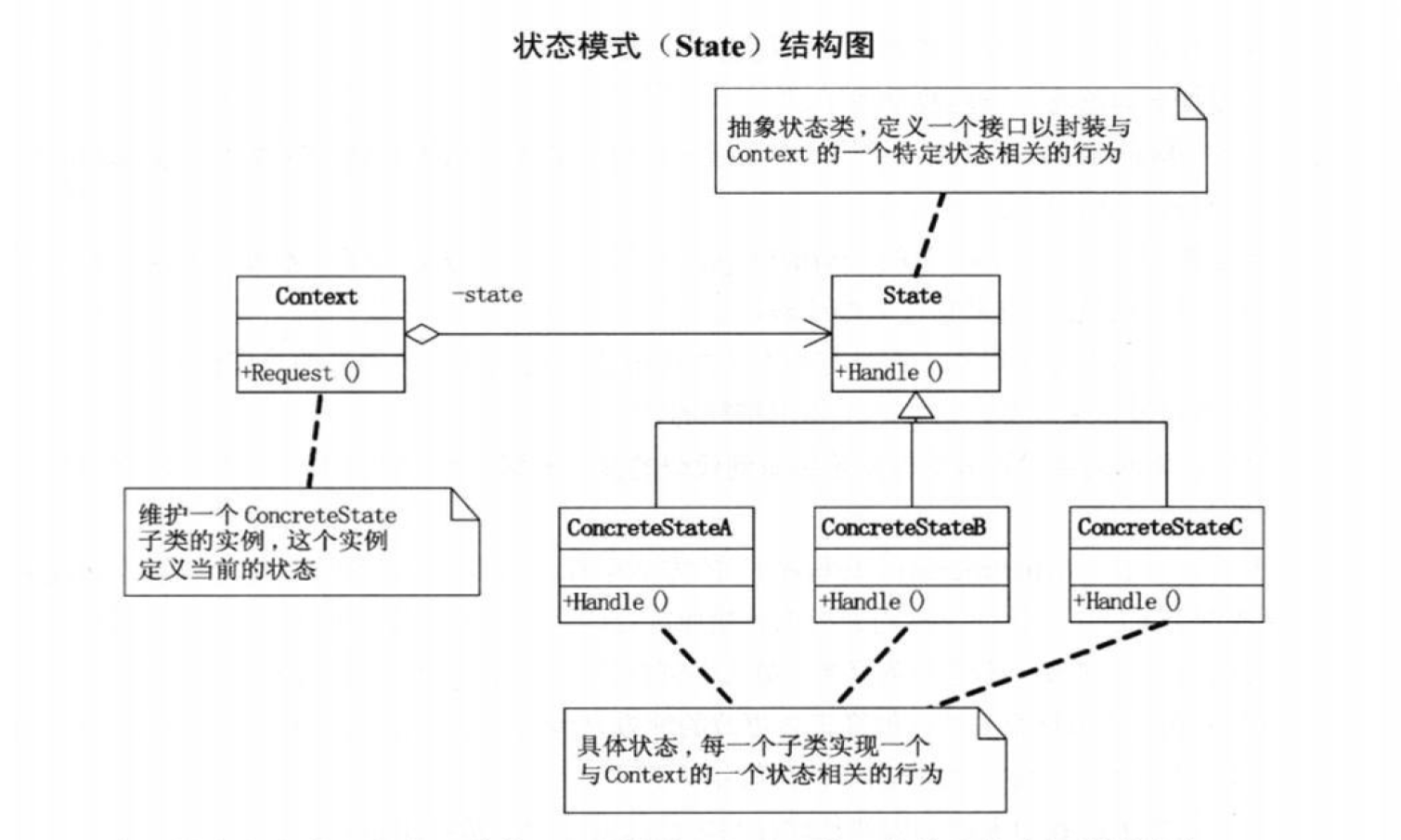B3:状态模式 State
当一个对象内在状态改变时允许改变其行为,这个对象看起来像是改变了其类.
状态模式主要解决当控制一个对象状态转换条件表达式过于复杂时的情况,把状态判断逻辑移到表示不同状态的一系列类中.如果状态判断很简单,就没有必要用这个模式了.
1.相当于面向过程中的if/else,状态模式在每个独立的状态类中实现判断,符合则处理,不符合则交给下一个状态类.
2.内部状态改变时,行为变化剧烈
3.有一个内部状态
UML

示例代码:
interface StateInterface
{
public function handle(Context $context);
}
class StateA implements StateInterface
{
public function handle(Context $context)
{
if ($context->getTime() == 'AM') {
echo '这是早晨';
echo 'Action: 写入日志';
} else {
$context->setState(new StateB());
$context->handle();
}
}
}
class StateB implements StateInterface
{
public function handle(Context $context)
{
if ($context->getTime() == 'PM') {
echo '这是下午';
echo 'Action: 显示界面';
} else {
$context->setState(new StateA());
$context->handle();
}
}
}
class Context
{
protected $time;
protected $state;
public function __construct()
{
$this->state = new StateA();
}
public function setTime($time)
{
$this->time = $time;
}
public function getTime()
{
return $this->time;
}
public function setState(StateInterface $state)
{
$this->state = $state;
}
public function handle()
{
return $this->state->handle($this);
}
}
$state = new Context();
$state->setTime('PM');
$state->handle();


